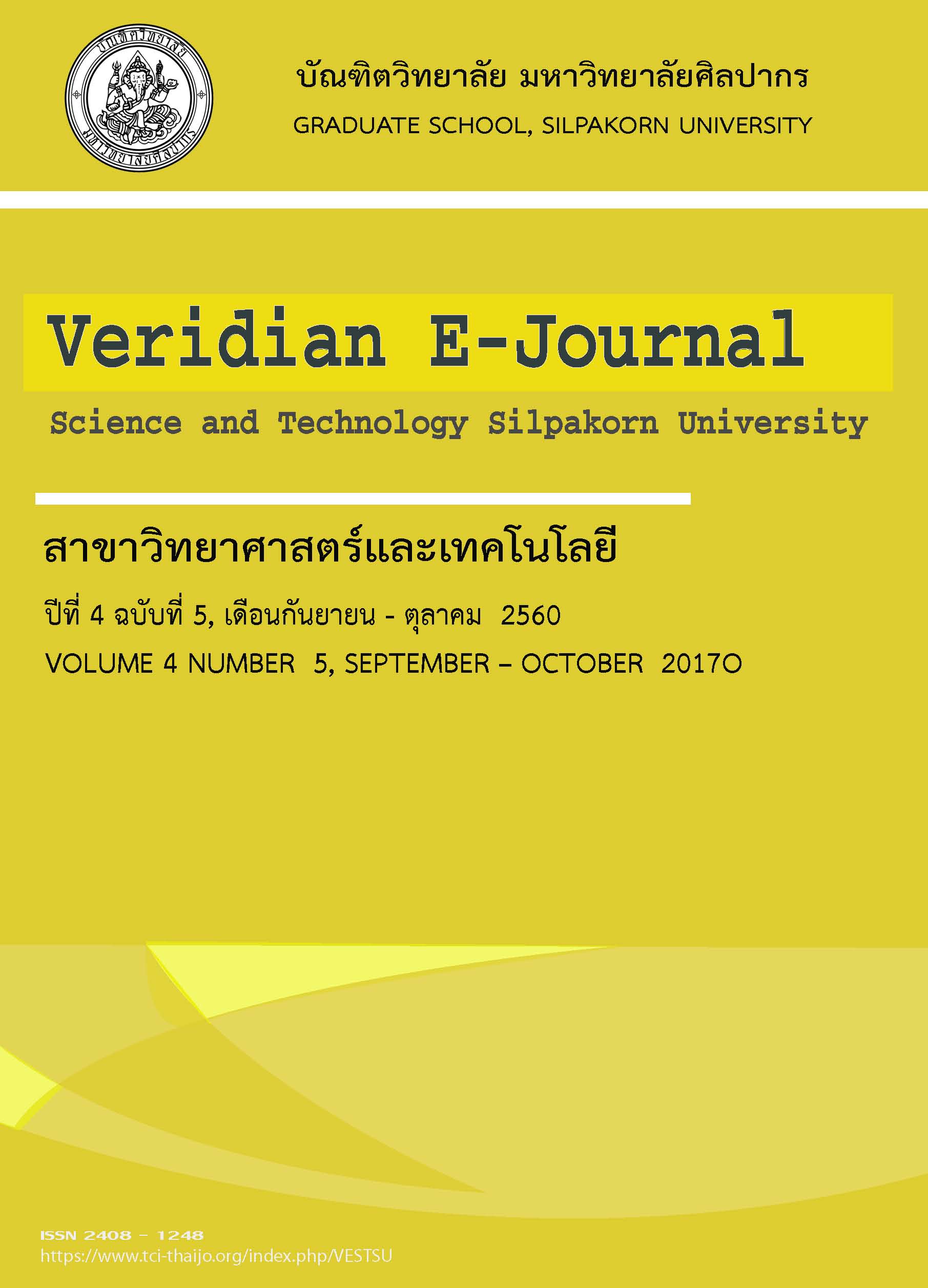ระบาดวิทยาทางอณูโมเลกุลของเชื้อไวรัสเด็งกี่แยกจากซีรั่มผู้ป่วยสงสัยโรคไข้เด็งกี่ ในประเทศไทย ปีค.ศ. 2015 (Molecular Epidemiology of Dengue Virus Isolated from Sera of Patients with Suspected Dengue Fever in Thailand, 2015)
Main Article Content
Abstract
โรคไข้เด็งกี่ (dengue fever; DF) และโรคไข้เลือดออก (dengue hemorrhagic fever; DHF) มีผลกระทบต่อประเทศไทยเป็นเวลานานมากกว่า 50 ปี และยังคงเป็นปัญหาสำคัญทางสาธารณสุขในประเทศ มีหลายรายงานระบุว่ามีผู้ป่วยโรคไข้เด็งกี่และผู้ป่วยโรคไข้เลือดออกในกรุงเทพมหานคร ประเทศไทยทุกปี ในการศึกษาครั้งนี้ ผู้วิจัยศึกษาการระบาดของเชื้อไวรัสเด็งกี่ (dengue virus, DENV) จากซีรั่มผู้ป่วยสงสัยโรคไข้เด็งกี่ในกรุงเทพมหานครในปีค.ศ. 2015 โดยการใช้วิธีทางอณูโมเลกุล ซึ่งได้แก่ วิธี reverse transcription polymerase chain reaction (RT-PCR), DNA sequencing และ Phylogenetic tree ผลการทดลองระบุว่าวิธี RT-PCR ตรวจพบเชื้อไวรัสเด็งกี่จากซีรั่มผู้ป่วยจำนวน 19 ใน 26 ราย (73%) โดยมีเชื้อ DENV-3 (7 ราย) > DENV-4 (6 ราย) > DENV-1 (3 ราย) และ DENV-2 (3 ราย) ตามลำดับ วิธี DNA sequencing และ Phylogenetic tree โดยการใช้ส่วนยีน E ของเชื้อไวรัสเด็งกี่ ตรวจพบ DENV-1 genotype I (จีโนทัยป์ดั้งเดิม) และ DENV-2 Asian I genotype (จีโนทัยป์ดั้งเดิม), DENV-3 genotype III (จีโนทัยป์อุบัติใหม่), DENV-4 genotype I (จีโนทัยป์ดั้งเดิม) และ genotype II (จีโนทัยป์อุบัติใหม่) แสดงว่าความหลากหลายของซีโรทัยป์และจีโนทัยป์อาจเป็นสาเหตุการระบาดของโรคไข้เด็งกี่ในกรุงเทพมหานครในปีค.ศ. 2015 ข้อมูลทางพันธุกรรมของเชื้อไวรัสเด็งกี่ในกรุงเทพมหานครอาจจะเป็นประโยชน์ในการประยุกต์ใช้ในการศึกษาทางระบาดวิทยาและสายวิวัฒนาการของเชื้อไวรัสเด็งกี่ต่อไป
Dengue fever (DF) and dengue hemorrhagic fever (DHF) has affected Thailand for the last five decades and become a major health problem in many cities in the country. Several reports revealed that there were patients with DF and patients with DHF in Bangkok, Thailand annually. In this study, we investigated epidemiology of dengue virus (DENV) from patient sera suspected with DF in Bangkok, 2015 using molecular technique such as reverse transcription polymerase chain reaction (RT-PCR), DNA sequencing and phylogenetic tree. The results revealed that the DENV analyzed by RT-PCR was from 19 of 26 patient sera (73%); DENV-3 (n=7) > DENV-4 (n=6) > DENV-1 (n=3) and DENV-2 (n=3), respectively. In addition, DENV-1 genotype I (native) and DENV-2 Asian I genotype (native), DENV-3 genotype III (emerging), DENV-4 genotype I (native) and genotype II (emerging) were detected by analysis of DNA sequence and phylogenetic tree using E gene of DENV. This study suggests that diversity of serotypes and genotypes may be the cause of dengue fever in Bangkok, 2015. Genetic information of DENV in Bangkok may be useful for further application of epidemiologic and evolution study.

